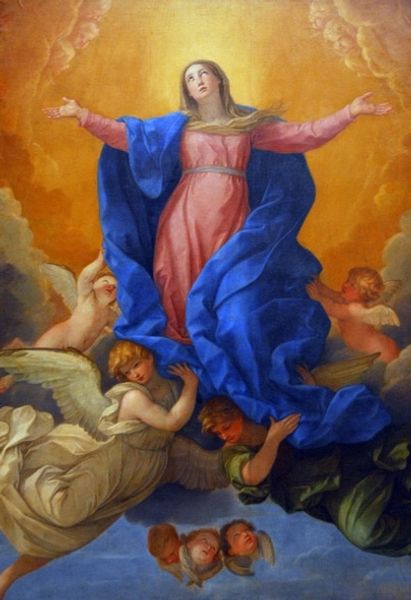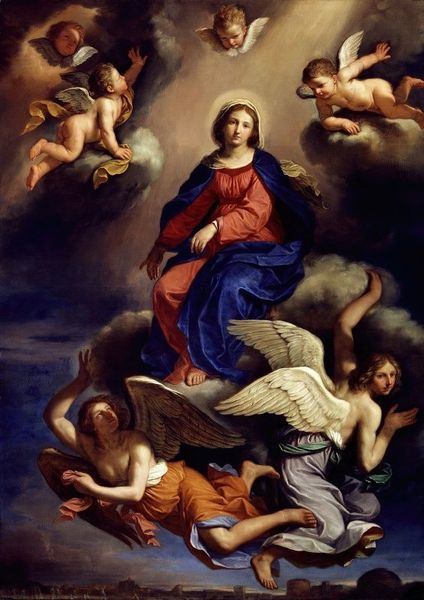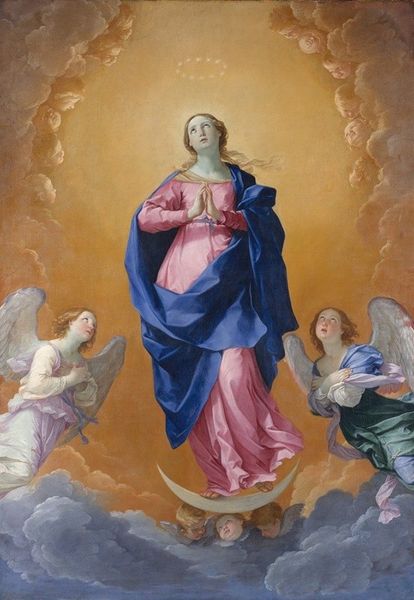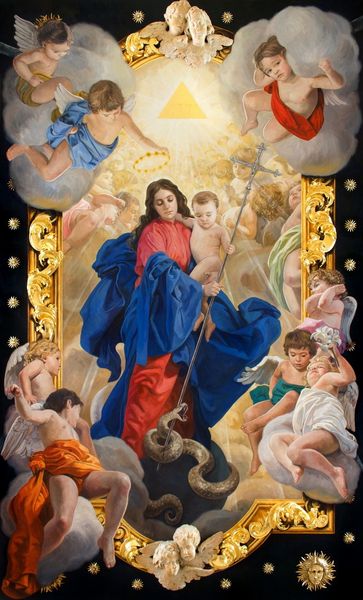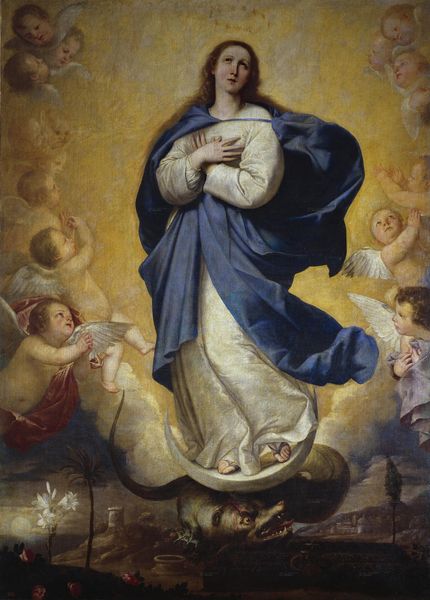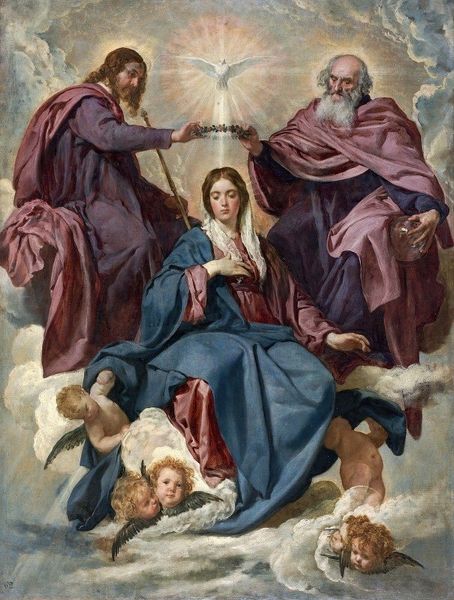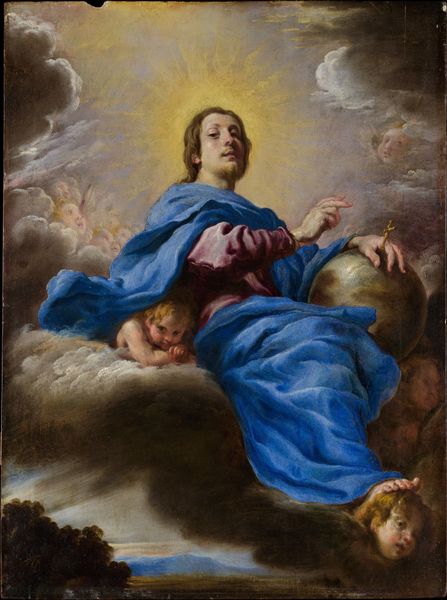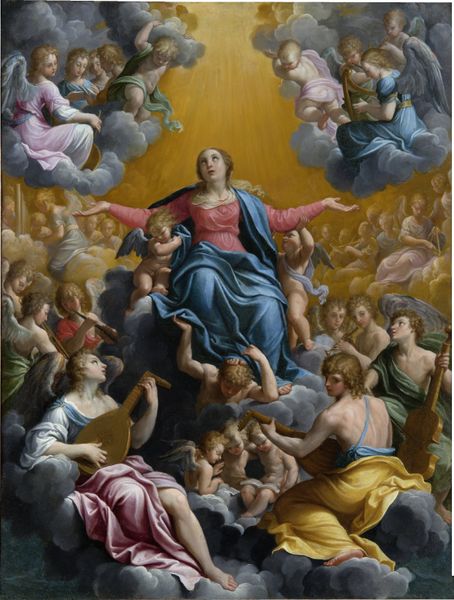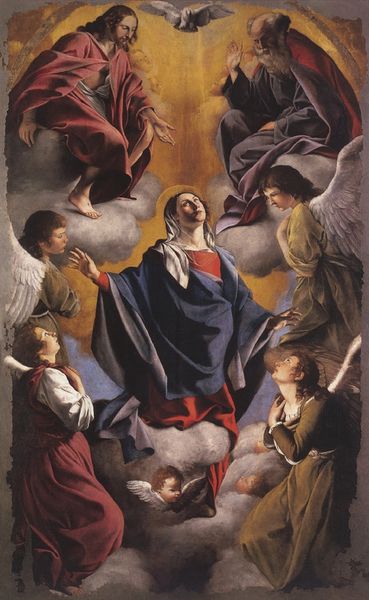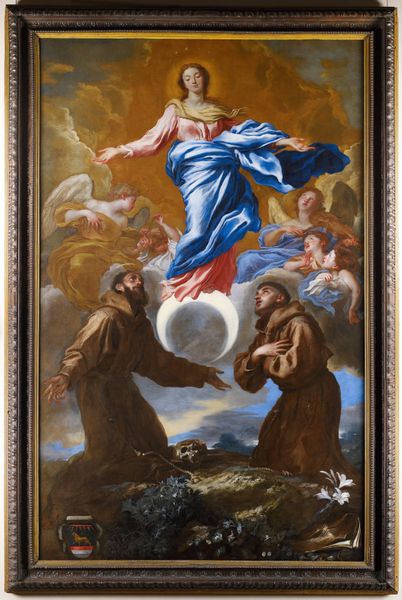
Copyright: Public domain
Editor: Here we have Guido Reni's "Assumption of the Virgin," created around 1580, using fresco. The composition strikes me as quite theatrical, with its upward thrust and dramatic lighting. What do you see in this piece, considering its formal qualities? Curator: I observe a meticulously constructed ascent. The Virgin Mary occupies the vertical axis, anchoring a pyramidal arrangement of figures. Note the artist’s calculated use of chiaroscuro to intensify the emotional tenor of the piece, directing the gaze upwards toward the light. The contrast serves not merely a decorative purpose, but underscores a visual representation of spiritual transcendence. What function do you think the angels have? Editor: Well, it seems the cherubic angels at the bottom are quite literally supporting the Virgin’s rise. There's a sense of gentle lift being offered. Curator: Precisely. Also note the Virgin’s robes: they delineate and shape her figure in a complex layering effect. This generates a dynamism that counterpoints, in a carefully calibrated manner, the symmetry in the piece. The textures here are important: see how the folds create volume, almost sculpting the body within the fabric? Editor: It’s interesting how much the fabric contributes to the sense of movement and drama, it almost looks like billowing clouds. It also seems her face is serene despite the intensity of the moment. Curator: That very point indicates the ingenuity of Reni's design, where the work invites contemplation on both material form and immaterial transcendence. Editor: Thank you for sharing that viewpoint. It really underscores the sophisticated tension between form and narrative. Curator: Indeed. By analyzing the arrangement, coloration, and figuration of forms, the work shows itself to have complex meaning.
Comments
No comments
Be the first to comment and join the conversation on the ultimate creative platform.
